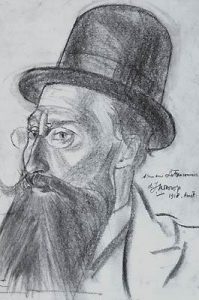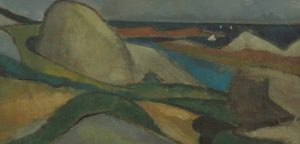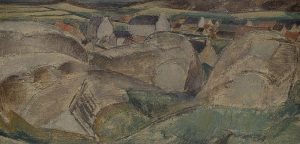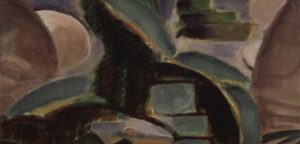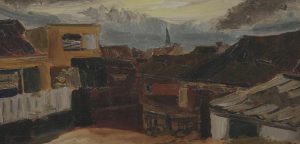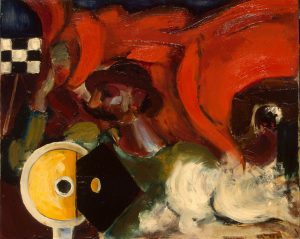Henri Fauconnier was born on the 5th of July in 1881 in Hesdin, France.
1881 - 1946
Henri Fauconnier
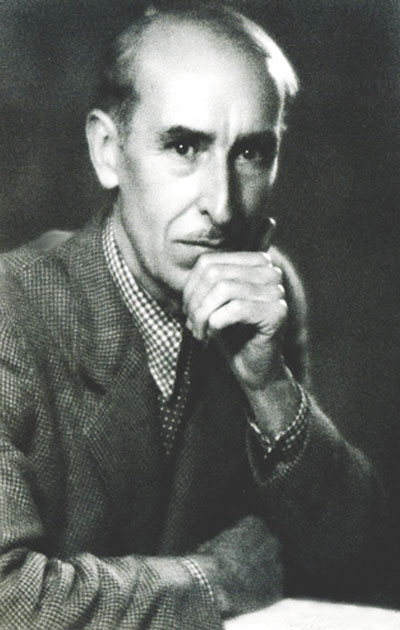
description
A French artist, art theorist and teacher. Henri Le Fauconnier was an active participant in the group of artists and poets “Puteaux”, and later became one of the founders of the first Cubist association “Golden Section”.
He was born into a well-to-do bourgeois family. In 1901, young Le Fauconnier came to Paris to study law, but soon became interested in fine arts and studied painting at the studio of Jean-Paul Lawrence, and later studied at the famous Academy of Julian. From 1904, the artist participated in the exhibitions of the “Salon of Independent”, presenting his impressionist works.
He exhibited his works at the annual Autumn Salon and the Salon of Independent, including the famous exhibition of Cubists at the Gallery 41 in 1911. The artist maintained close ties with his German and Dutch colleagues, was a part of the organization “New Union of Munich Artists” and organized the famous Bergen School in the Netherlands, which contributed to the dissemination of abstract painting in these countries. From 1912, the artist headed the Academy of La Palette in Paris, where his students, among others, were Marc Chagall and Marcel Gromer. Henri Le Fauconnier often visited Russia, where he exhibited his paintings at the Salon Golden Fleece, Salon Izdebsky in Odessa and at the exhibitions of the Knave of Diamonds in Moscow.
Key ideas:
– Despite the fact that Henri Le Fauconnier today is less known than his famous friends Robert Delone, Jean Metzinger and Albert Gleizes, he was a real pioneer of Cubism, one of its first followers, who made a great contribution to the development of this style. His studio in Visconti Street was open to anyone wishing to learn Cezanne’s works and to experiment with new art styles. Avant-garde poets and artists who were destined to change the history of contemporary art and lay the foundations of an abstract style gathered here.
– The individual method of the artist, based on his early interest in the work of the Nabi group and the Pont-Aven school, is distinguished by a restrained color palette, simplicity and laconic forms. Most of the paintings of Le Fauconnier are made in shades of soft brown, green and gray, the author’s favorite colors, which have become a recognizable feature of his work.
– Le Fauconnier preferred the strict landscapes of Brittany and Holland to the beauty and richness of the colors of the south of France, depicting them in the Cubist tradition by means of geometric simplified shapes. In his landscapes, large masses are marked by large areas of color and are bounded by thick black lines, which is a distinctive feature of his style.
– Henri Fauconnier worked a lot on portraits and nudity, studying various ways of representing the shape and volume of the human body. In many works, including nu, his interest in depicting motion in paintings is noticeable. With the help of Cubist methods of fragmentation, he tries to express the energy of the moving object and the effect of this movement on the surrounding space.
– In the late period of Le Fauconnier’s work, he addresses a special form of expression, closely related to Cubism and Abstract art. He departs from the modern Parisian art movements, preferring to work in a quiet rural area. The pictures of this period had a great influence on the avant-garde painting of Holland, where the artist spent a lot of time working on his paintings and communicating with many Dutch avant-garde painters.
1881
1907
1910
1912
1920
1946
The birth of the artist
The artist made a trip to Brittany
Due to his fascination with the works of P. Gauguin and the Nabi group, he changed his style of painting towards Post-impressionism, simplifying forms and using clear, expressive lines. The artist made a trip to Brittany, where he worked a lot on landscapes and portraits of local residents. The style of Le Fauconnier gradually became more and more geometrized, approaching the painting of Cezanne.
In 1911, he participated in the first exhibition of Cubists
Met the Parisian artists of the Puteaux group, who later became the Cubist group Golden Section and participated together with J. Meitsenge and A. Gleizes in the Autumn Salon. At the end of the same year, he began to communicate with W. Kandinsky and became a member of the group New Munich Art Association. The artist regularly held meetings of poets and painters at his studio in Visconti Street. In 1911, he participated in the first exhibition of Cubists at the “Salon of Independent”.
He visited Russia
He visited Russia for the first time, where he participated in the Cubist exhibition “The Golden Fleece”. Here he met his future wife M. Barannikova. Having returned to Paris, he wrote several articles on art and went to work in the north of France. At this period, the artist’s style underwent strong changes; he gradually moved away from Cubism and began to work in his own original style, close to Expressionism. In the same year, the artist became the director of the La Pallet Academy in Paris. During the First World War, he lived in the Netherlands, where he communicated with local avant-garde artists. Le Fauconnier became the organizer of the Bergen School of Painting and actively influenced the spread of contemporary art in the country.
Returned to his studio in Halle Street in Paris
Returned to his studio in Halle Street in Paris. The artist worked within the aesthetics of “the return to the order”, combined the methods of Expressionism and mastering the experience of old Dutch and Flemish masters in his manner. Changes in post-war Europe strongly influenced the style of La Fauconnier, who never returned to modern painting, but worked in a calm traditional style. The artist mostly depicted the landscapes of northern France and the portraits of the people who were close to him.
The death of the artist
He died on the 25th of December in 1946 in Paris.

